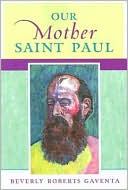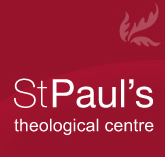
My thanks to
Phil Sumpter for the following review, and to the kind folks at
IVP for the copy.
Christopher J. Wright,
Old Testament Ethics for the People of God (Downers Grove, IL: IVP, 2004)
The title alone is enough to make you baulk at the scope this volume attempts to achieve. This isn't just a description of the ethics of ancient Israel, nor is it a description of the ethics found in the literary deposit of this community: “the Old Testament.” It is an attempt to locate the ethics of both within their true
Sitz im Leben, the lived contemporary reality of the true Israel, the Church. Before we even enter its pages, then, one can expect at the outset an attempt to integrate historical critical, literary, philosophical, and theological concerns in a synthesis of the like rarely encountered in the guild of biblical studies. Whether Wright has succeeded will remain to be tested by those with an adequate knowledge in all these areas. Critique by specialists in only one area will run the risk of confusing the particular with Wright's broader vision.
A three-dimensional approach to OT ethics such as this, which strives both for descriptive accuracy and theological normativity, cannot be content to tell us “what the OT said.” A model is needed in order both to integrate the parts and span the horizons, and this is the task Wright's
first section: A Structure for Old Testament Ethics. He takes the now well-known route of “world-view” analysis (á la N.T. Wright) in order to provide a context in which to make sense of and correlate the mass of OT ethical material. Though he often talks of “what an ancient Israelite thought,” it is clear that the world view he has in mind is the one presupposing the entire OT canon – an entity with its own hermeneutical and theological integrity (see footnote 3). If one poses this totality the four “world-view questions” (Where are we? Who are we? What's gone wrong? What's the solution?), we come up with an “Israelite” answer along the following lines: we are in God's creation, created for relationship in the image of God, the created order is in a state of fallenness due to our rebellion and so God's solution has been to initiate a historical project of redemption. The “we” in the narrow sense is Israel, elected to be the means of God's redemption in the world. As Wright goes on to explain, this “we” can be expanded in different directions: either paradigmatically to stand for humanity as a whole, eschatologically to stand for the redeemed community of the eschaton, or typologically to refer to the church.
Wright identifies three primary “actors” in this world-view who stand in triangular relationship to each other: God, Israel and the Land. This so-called “ethical triangle” provides Wright with a framework for sifting through the diverse OT material as well as a foundation for expanding the OT material beyond its original horizon.
These three “pillars of Israel's faith” are padded out in the following three chapters. Accordingly, the
“theological angle” provides us with the “fundamental axiom” of OT ethics: “ethical issues are at every point related to God—to his character, his will, his actions and his purpose” (23). Wright takes us through the OT's presentation of God's identity, particularly as it is manifested in the narrative accounts of his actions. This activity, salvific in nature, provides a foundation for ethics. God takes the initiative (e.g. the exodus), his people respond, and obedience flows out of thankfulness for this action. These actions are combined with God's speaking (e.g. at Sinai) in order to bring about his purposes for creation through Israel. Wright sums up the
heilsgeschichtliche context: “Old Testament ethics, based on history and bound for a renewed creation, is thus slung like a hammock between grace and glory” (35). In the meantime, our actions should be grounded in a knowledge of
this God as we emulate him by “walking in his ways.”
The
“social angle” references Israel on the triangular grid. Wright points out that within the aforementioned meta-narrative, redemption has a social dimension. In Gen. 12:1-3 God responds to the fall by choosing a
nation, which was to pattern, model and be a vehicle of this redemption. In terms of the application of OT ethics, then, our hermeneutical procedure must take very seriously the communal nature of the people of Israel. We must not jump from isolated principles to the present, but rather first locate that principle within its original social context. Only then can we draw an analogy with present “Israel,” before going on to see the implications for the world at large. Yet the distinctive nature of this nation as opposed to the other nations must not be lost. This nation has a unique experience of God, which gives its history a didactic quality. Through it we learn about God (the “theological angle”) and we learn how to live (the “social angle”). In short, Israel is God's
paradigm, an important concept for Wright as he attempts to make Israel's ethics ours. According to Wright, a paradigm is
a model or pattern that enables you to explain or critique many different and varying situations by means of some single concept or set of governing principles” (63).
Israel as paradigm helps the Church today implement what was true then to a new situation now.
The final essential element in Israel's world view is the Land, providing us with an
“economic angle.” When understood within Israel's story, we see that the promised land is a theological entity, part of the pattern of redemption. The understanding of the land as both divine gift and divine tenement, for example, has what Wright calls “enormous paradigmatic power” for the appropriation of Israel's economic ethics. Within the divine economy, we see that the welfare of the land and its inhabitants functioned as a “covenantal measuring gauge,” signally the quality of the relationship between God and his people.
Following the belief that “God's relation to Israel in their land was a deliberate reflection of God's relation to human kind on the earth” (183), Wright moves on in the following two chapters to work out the implications of this “redemptive triangle” for the ethics of ecology and economics in general. In the case of ecology, for example, he discovers parallels to the affirmations made at the narrower level concerning Israel in the land of Canaan: “
divine ownership (the earth belongs to God, Ps. 24:1) and
divine gift (the earth he has gifted to humanity, Ps. 115.16)” (103)—the so-called “creation triangle.” This double claim becomes the foundation for Wright's ethical reflection in the following two chapters. The fact that a concern for ecology is largely foreign to the authors of the Bible demonstrates how we can paradigmatically appropriate the Bible's principles for issues beyond the Bible's original horizon.
The most intriguing chapter is the sixth, in which Wright, having now illustrated ways in which the Bible can be paradigmatically appropriated, rises once again to theory in order to discuss two others ways of appropriating the OT: the eschatological and the typological. By means of fascinating triangular diagrams, he shows how these different methods are distinct yet complementary. Paradigmatically interpreted, for example, the land becomes the earth as it is now: cursed. Eschatologically, the past becomes a template for the new, and so we have a foretaste of the new creation. Typologically, for the apocalyptic community caught at this point in the “in-between-time,” the land is now fulfilled by the
koinonia, the fellowship of believers. This complex interrelationship is then demonstrated exegetically in relation to the jubilee (Lev. 25).
The rest of this main part of the book is dedicated to further ethical issues: politics and the nations, justice and righteousness, law and the legal system, culture and family and finally the way of the individual. The volume is rounded off in
Part 3 with a historical overview of the church's wrestling with this question, a bibliographic overview of the contemporary attempts to deal with the question of OT ethics from a confessional standpoint and a detailed discussion of hermeneutics and authority in the OT. A final appendix presents us with some broad perspectives which Wright finds helpful for setting the “Canaanite question” within it the context of broader biblical considerations. Though Wright doesn't feel he has solved the issue, he feels these considerations help “contain” them.
In response, I can only echo a critic's comments on the blurb at the back of the book: this book is “truly a
magnum opus and should be at the top of the reading list for any student, teacher, minister or layperson interested in the relevance of the first part of the Bible to modern ethical issues.” Issues that have dogged the church since its inception are taken up once again and re-articulated in a clear, logical and thorough manner, taking into account the latest developments in rhetorical, literary, and, to a degree, canonical criticism. Whether Wright's conclusions become the consensus opinion of the next generation obviously remains to be seen, but I can't imagine future discussion of the issue ignoring the well-thought out arguments laid out in this book.
Labels: Book Review, Guest Post















.jpg)








